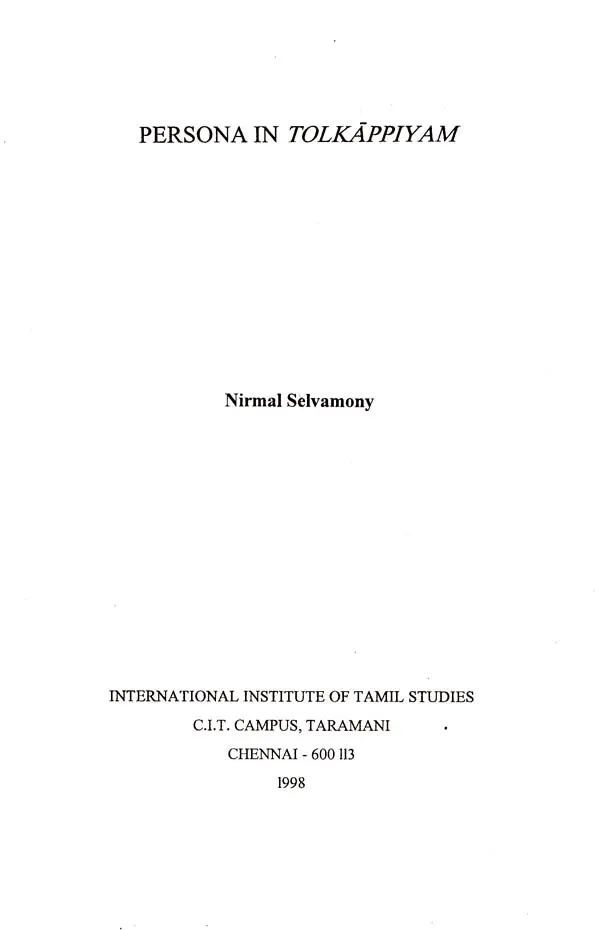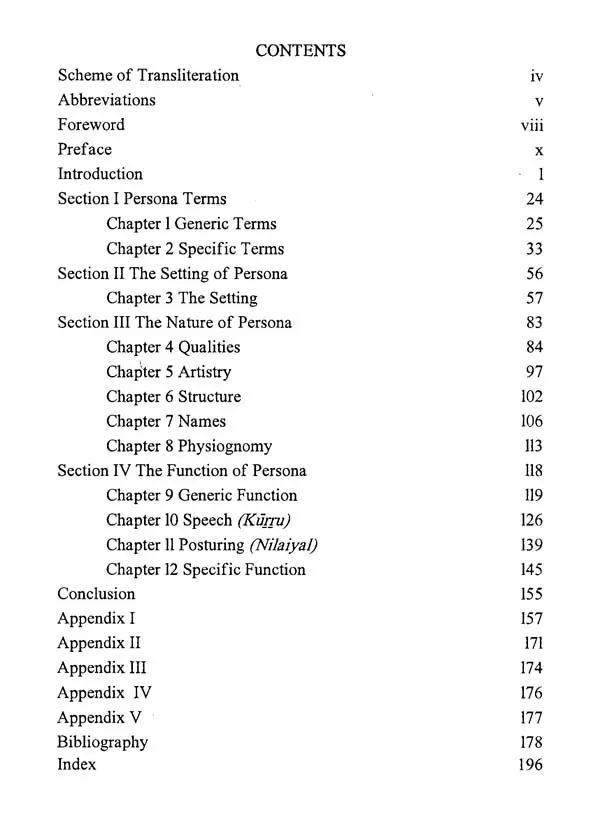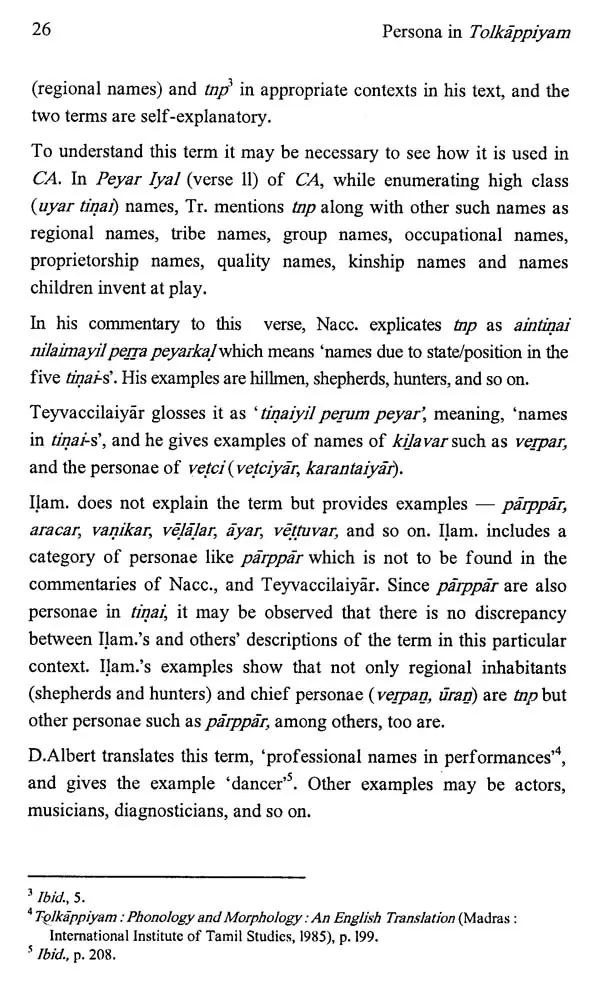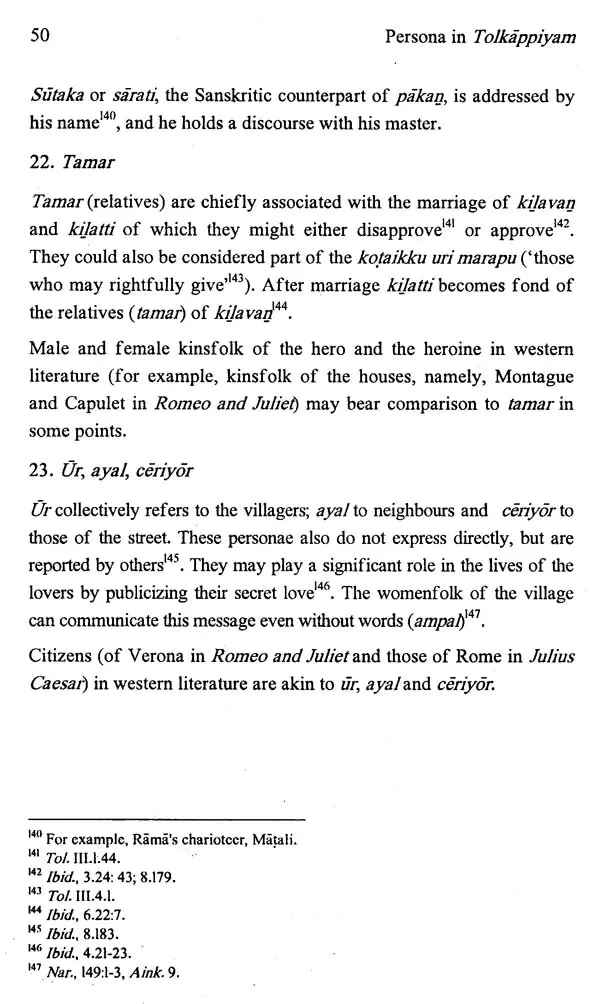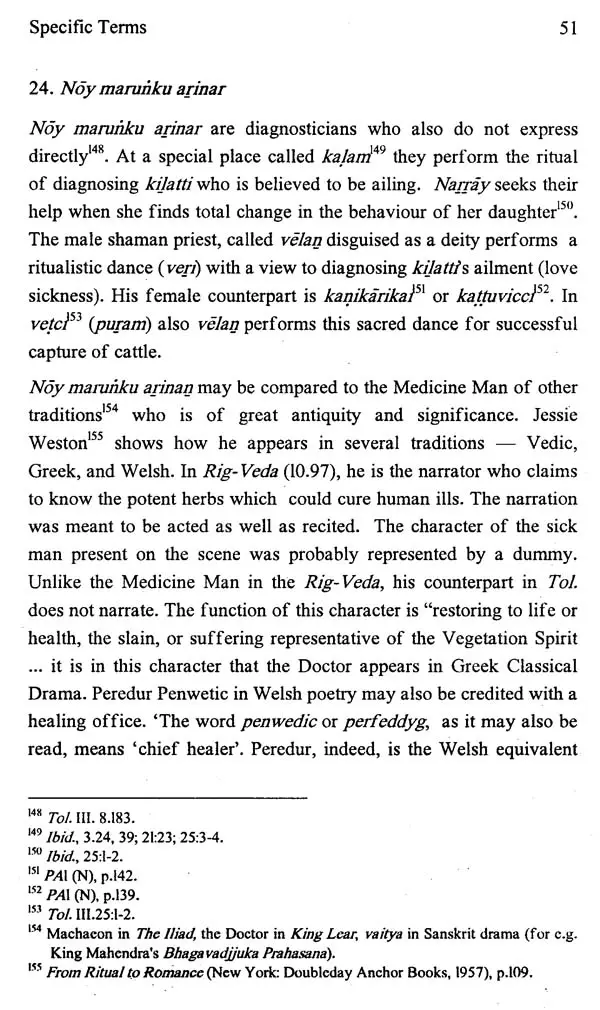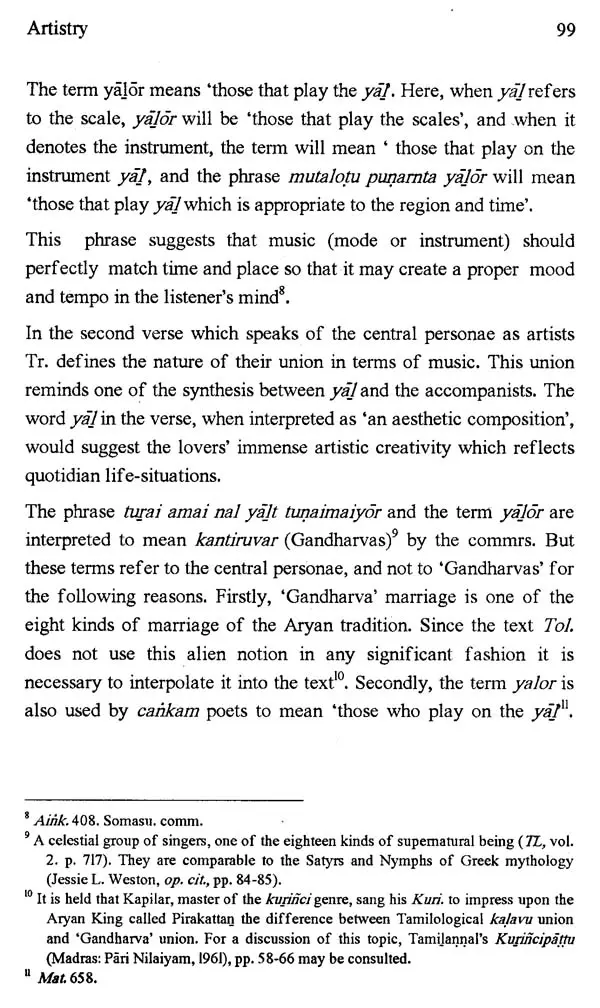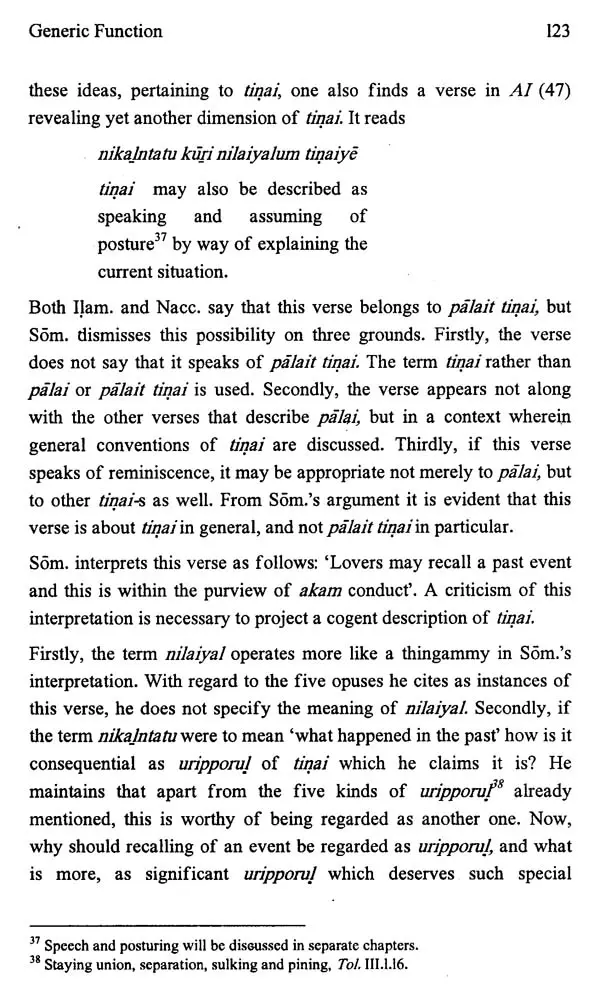
Persona in Tolkappiyam
Book Specification
| Item Code: | UAN163 |
| Author: | Nirmal Selvamony |
| Publisher: | International Institute of Tamil Studies, Chennai |
| Language: | English |
| Edition: | 1998 |
| Pages: | 224 |
| Cover: | PAPERBACK |
| Other Details | 8.50 X 5.50 inch |
| Weight | 250 gm |
Book Description
From its inception the International Institute of Tamil Studies has promoted Tolkappiyam studies by publishing various translations and also several books based on it. Mr. Sivalinganar has brought out variorums for the entire text. Years ago the Journal of Tamil Studies carried Dr. Kamil Zvelebil's translation of Tol. Later, Dr. Albert's translation of phonology and morphology was also published by the Institute. Recently, Dr. A.A. Manavalan has translated Porulatikāram and it will be published shortly. Beside translations, a comparative study of Tolkappiyam and Ashtadyayi (1997) has been produced by Dr. K. Meenakshi through this Institute.
In the publication of studies connected with Tolkappiyam Dr. Nirmal Selvamony has already made his own contribution. He collaborated with Dr. V.P.K.Sundaram on the monograph Tolkappiyattil Icaikkurippukal (1994). Originally given as endowment lectures (1993) at this Institute, his Tamilk Katci Neriyiyal (1996) reconstructs the methodology of early Tamil philosophy with the help of the data available in Tol. In the seminar on Tolkappiyam conducted by the Institute he presented a paper on the "Aesthetics in Tolkappiyam which is collected in the proceedings of that seminar (1997).
The present publication adds yet another volume to the corpus of Tolkappiyam scholarship, and the Institute is happy to place it in the hands of the readers.
Persona is the state of being enjoyed by person in a (literary) work of art. The term person' needs some explanation. Among other things it could denote such things as (1) an individual human being, (la) the body of a human being, (lb) the individual personality or self of the human, (2) reference to the speaker, one spoken to and one spoken of as, (3) one of the three modes of being in the Trinitarian Godhead, (4) one that is recognised by law as the suject of rights and duties and (5) character or fictional personality or persona. Of these five meanings the first ('a human individual') pertains to general discussions or philosophical discourse; the second to the province of grammar, the third to theology, the fourth to law, and the fifth to literature. Though the term person has been regarded as a synonym of persona, at times, in criticism both these terms should be distinguishable semantically for the sake of clarity.
Persona is said to refer to two things in literature character or fictional personality in literary works of art, and the alter-ego or voice of the author. Are these two entirely different things altogether? A close examination reveals that they are not as they are made out to be. What is the alter-ego of the writer? In literature in the first person, as in lyrics, the narrator is described as an alter-ego of the author himself. This could probably mean that the model for the alter-ego is the author himself. However, on no account may the author and his alter-ego be identified. If the author is the actual person, the persona is the virtual person or the alter-ago. For example, in Milton's sonnet 'On His Blindness', in the opening line ("When I consider how my light is spent') the I is the persona (virtual person) created by the author, and it is not to be identified with him. Persona should then mean 'fictional personality', a kind of ahistorical agent 'realised' only by a person who is an embodied historical agent. Such realisation (referred to by terms like 'empathy, and 'reconstruction" in western literary criticism) is, however, beyond the scope of this study.
**Contents and Sample Pages**
